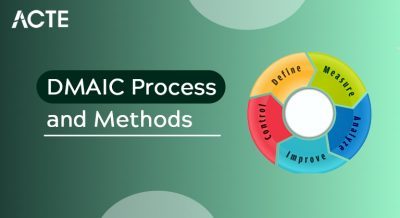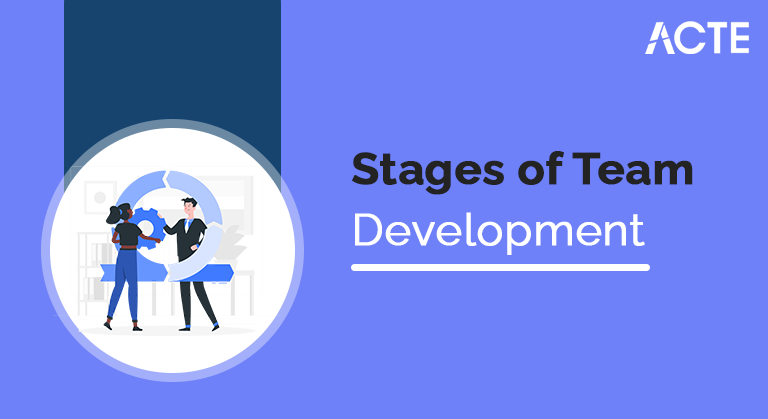
It talked about the four stages of development all teams move through over time: forming, storming, norming, and performing. In 1977, Tuckman and doctoral student Mary Ann Jensen added a fifth stage called adjourning to make it the “five stages of team development.”
- Introduction to team development
- What are the 5 Stages of Team Development?
- Characteristics of a successful team include
- Types of team development
- Examples of Team Development
- Five Essential Steps to Develop Your Team
- Why is Team Development Important?
- Team Building Trends
- Benefits of Team Development
- Conclusion
Introduction to team development:
A team could be a cluster of individuals World Health Organization work along to realize an equivalent goal. Every team member is vital to an equivalent goal in his or her own method, employing a totally different set of skills to meet the role of the team. However, everybody within the cluster shared an equivalent perspective and perspective. whereas this might sound straightforward on paper, mensuration individual and cluster goals is extraordinarily tough, particularly in times of stress, failure, or conflict.
This method of learning to figure along effectively is understood as team development. Bruce Tuckman, an instructional scientist, has known a five-stage development method that’s followed by several groups to perform well. He referred to these stages: building, winding, adapting, performing, and reversing.
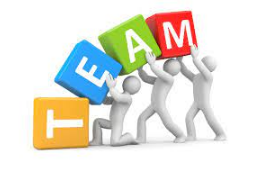
What are the 5 Stages of Team Development?
Five Phases of Team Development was developed by scientist Bruce Tuckman in 1965. These 5 stages locomote as a team operating along, however particularly once the team brings awareness to its transformation.
The 5 stages of Tuckman Team Development area unit as follows:
1. Construction
During the “constructive” part of team development, team members become aware of the essential aspects of their work. The formulation of stage discussion topics sometimes includes project project, roles of team members, basic rules, and also the appointment of authority. The molding stage could be a honeymoon to introduce teamwork — production is low, however team members have recently become too aware of one another to trot out conflict.
2. The storm
Of course, all the stages of the honeymoon finish within the finish. because the actual work begins, the project might give each technical challenge and human interaction. Individual work habits, leadership selections, or communication failures will produce tensions inside the cluster. Anger, frustration, and anxiety typically result from the reaction. This part of cluster development is thought of as storming.
Storming is incredibly tough and unproductive in 5 stages of development, however nevertheless necessary to the cluster development method. Once team members are upset by themselves, the worker, or one another, they learn what’s inflicting the foremost unskillfulness. With this data, a team will begin to aim to own a stronger robust|an improved} and more versatile team.
3. Familiarity
A common part of cluster development is calm when a storm. At this stage of team development, team members fall under rhythm as a team operating along. the abilities of every member area unit verified and accustomed perform the specified tasks. Although conflict might arise at this stage, it’s not a malfunction. The team will handle conflict and continue the work with success.
4. To do
Some groups reach a stage of development wherever they surpass in their individual and collective work. Every member’s skills are absolutely developed, supervising is nearly unessential, and members have a robust sense of trust. This part of team development is termed performance.
Reaching the enjoying stage could be a nice accomplishment and sometimes quickens some type of cluster learning. Team learning could be an ethical method for seeking, collecting, negotiating and applying team success methods. Whether or not through coaching, team initiation, or new leadership, team learning is an associate degree action step that ensures healthy team development.
5. Postponing
The fifth part of cluster development ends. Suspending varies greatly from cluster to cluster. Some teams retreat peacefully, some with joy, some with disappointment. in spite of the length or success of the project, every team deserves the honest assurance of its conjunct efforts. The retreat part could be a nice chance for leaders to encourage long communication, replicate team growth, and celebrate the closure of the project.
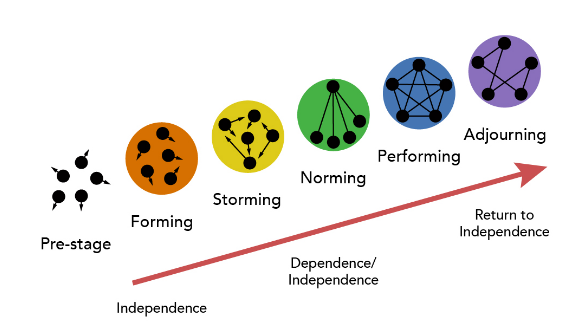
Characteristics of a successful team include:
POLICY: Everyone in the group has a clear understanding of what the purpose is.
COMMITMENT: Everyone in the group invests their time, energy, and attention in a common goal.
R 3: Everyone in the team understands the RULES, DUTIES, AND RESPONSIBILITIES of the flexible team.
PROCESS: Team communication, decision-making, and accountability mechanisms are agreed upon and effectively managed.
Almost all teams need one or more of these methods at some point in their catch. Team development strives to meet these criteria for continuous reflection and growth. As with any type of development, it takes time and dedication to succeed. In other words, the team does not progress from start to finish overnight. In addition to the tools used for team development, the process should be maintained with long-term awareness.
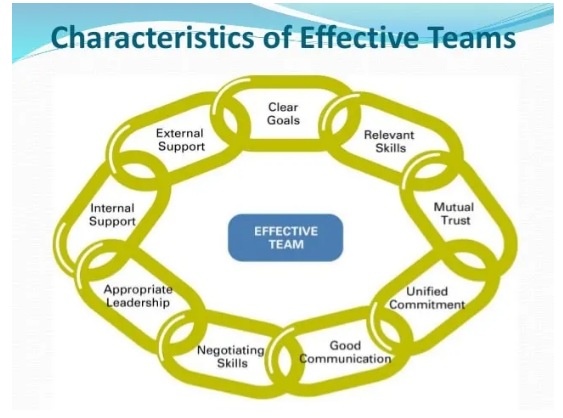
Types of team development:
Work-based team building
Work-based team building works by introducing team members to the challenges they must complete together. This type of team building teaches people to work together and trust each other. It also takes people out of their comfort zone when they are faced with a task they have never done before.
Work-based team building can include physical or intellectual activities. Exercise is a good choice if you have a small and active team. The most common physical activities for team building are sports such as go kart races, laser tag or paintball. Although physical activity is very effective in promoting your team’s competitiveness. On the other hand, intelligence works are best suited to expose strategists hiding in them. Troubleshooting activities such as “Escape the room” are ideal for improving your team’s performance.
Skills-based team building
If you feel that your team needs to work on developing a particular skill, then this is the kind of work you need. Indeed, there are activities designed to teach skills such as leadership, conflict management and negotiation. With these activities, you can eliminate potential problem deficiency and thus increase productivity. However, keep in mind that building a team based on skills requires contracting with a professional and can prove to be more expensive than team-based team building.
Team building based on value
Value-based group formation involves all group members participating together in charitable work. This type of work provides an opportunity for everyone to show their colleagues the best aspects of their character. Working together to give back to the community is a memorable experience especially for sharing with your team members. And it will not only strengthen bonds in your team, but will also increase employee engagement. Indeed, employees tend to be concerned about a company that incorporates human values into its policy and acts accordingly. Value-based activities include, for example, assisting with a local shelter, or running a meal plan and donating a benefit to a charity of your choice.
Team cooperation
Sometimes, all you need to do is develop a working relationship to spend time with a partner in a relaxed environment. That’s why taking your party to a restaurant or bar can be a great idea. This type of team building activity does not focus on developing a particular skill, but provides an opportunity for your team members to engage in casual conversation and get to know each other better. Team collaboration is easy to organize and is an inexpensive way to strengthen bonds in your team, so do not hesitate to use it to get the best out of your team members.
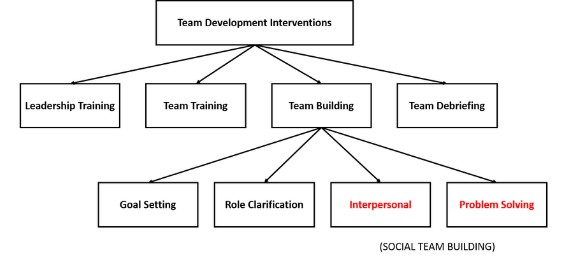
Examples of Team Development:
It is the responsibility of the small business manager to develop the staff members of the staff. Good role models in team development have one thing in common – they help the team move forward, grow in cohesion and work effectively. Team members want to play because they enjoy the benefits of being in a strong team
Identifying Problems
The work team can be prevented from problems such as negative tone or specific conflicts between team members. Organize development activities so that the group develops its emotional intelligence. This requires gaining a team’s commitment to identifying areas of weakness in terms of emotional intelligence and making people committed to changing their individual behavior. When a group is committed to change, it has the opportunity to create a ton of positive emotions.
Setting Procedures
It is also important for the manager to monitor group practices. A team of employees may have a set of behaviors that differ from the practices of other groups. For example, the group puts a high value on arriving on time for group meetings but ignores when group members often arrive late for their assignments. The manager must uphold the team’s policies to meet the organization’s policies, which are usually set by senior leaders.
Regular Meeting
Some teams need the opportunity to communicate regularly because they are dealing with problem solving in the product. To give time for a problem-solving session, meet with the team first thing every Monday or every morning. Introduce the latest information the team needs to know, identify any problems and let the team think about how to solve the problems. For example, if a team does not meet a goal this month, let team members split parts of the program to reach and achieve the goal.
Changing Scenery
Sometimes management arranges for a group to leave the office. If you select a problem that a company or team needs to fix, team members can work on their solutions at a different meeting place. Scheduling recreational activities for the same day is optional. Team members need time to build relationships with team partners. As a manager, you need to have clear goals for any development team you are planning.
Five Essential Steps to Develop Your Team:
1) Make sure everyone understands their role.
2) Provide training and development tools.
3) Just let them do their job.
4) Meet with team members regularly to discuss goals .
5) The game plan for their growth.
Why is Team Development Important?
Caring for a successful team is like caring for a garden; if left unmanaged, they can be left astray and lose the right path. Team development ensures that the team can succeed in the long run.
Inclusive team development benefits the team in many ways. Individual team members learn more about their own strengths, responsibilities, and hard work within the group. In contrast, team development acquaints with each member of the team. This combination of internal and external thinking strengthens communication, productivity, and well-being in the team.
- Learn here about the strengths and weaknesses of different generations in the workplace.
- Learn here how to close the generation gap at work.
Team Building Trends:
1. International Team Building:
A thousand years, generations x, y and z, you say. For the first time, the staff consists of five generations, each with different ideas and styles of work. By 2019, the trend has been to adapt team building to different team sizes, the focus of 2020 will be to streamline team building activities with different generations in one team. Team building for generations will be a common challenge in team building with a focus on communication, teamwork and the strengths and weaknesses of each generation. To meet this challenge, team-building activities such as FreshBiz and Beat the Box are good because they test different problem-solving skills each generation manages differently.
2. Danger:
According to the Deloitte Global Millennial Survey (2019), climate and the environment are a major concern for 29% of the millennial generation and 42% would prefer an employer who has an environmental or moral impact than a high-paid employer. With thousands of years going to create three-quarters of the workforce in less than six years, Corporate Social Responsibility (CSR) is becoming more important than ever.
Applying CSR to your business model is one thing but putting it in your team on your day of travel shows that you really care. Your employees will be involved in your good corporate conduct and will greatly appreciate making a difference with their team and company. Team building work like Helping Hands or Toy Factory adds that extra dimension and perspective next to the fun feature.
3. Speed:
We have registered a great need to build a fast team but what exactly is a fast team? A fast-moving team is a rounded group of people, each working for a single goal, for example, to improve a product or service. These people are aligned with each other and focus on their team so that they can fully focus on the product they are dedicated to, like a machine with all the components needed to work. Learning and development trends
4. Self-expression in conversation:
We see a great tendency to “disrespect”. This is about being open, not being ashamed of it and not embarrassing others, by trusting others and creating a safe environment together. People are encouraged to arm themselves and stop suppressing their feelings. Meaningful discussions are therefore anticipated that they will be a major part of the team’s development with much of the time set aside to discuss and discuss the outcomes and challenges facing the system. A great and fun way to learn how to unlock gamification. For example, Speak Up Speak Out is a customized activity that focuses on collaborative and participatory group discussions that work in the workplace. Another excellent negotiation tool, Appreciative Inquiry, explores problem-solving skills with four stages of constructive dialogue ultimately leading to new solutions and applications.
5. Strength:
Many people are shocked by the shocking events of 2019 in Hong Kong and what is happening now throughout Asia. No one could have prepared for it so that businesses could survive, it all comes down to making informed decisions and promoting team cohesion to strive to achieve the same company goals. When it becomes more challenging to work with secondary stakeholders as clients and vendors, get the opportunity to work with business building strategies and support and support.
Benefits of Team Development:
1. Higher Communication
Communication between employees and departments is the key to success. Team building tests encourage staff to attach to complete tasks and solve issues. By golf shot folks during fun and relaxed surroundings outside the geographic point, you may encourage everybody to relax, be personal and hospitable to others. An example of promoting improved communication would be a picket path wherever all team members should communicate effectively so as to steer harmonical.
2. augmented Productivity
Better communication and collaboration can have a positive impact on productivity levels. By functioning on a constant goal, duplication of labor decreases, there’s less conflict and resistance, thus a higher result from every worker. This is one amongst the foremost wanted goals for employers once it involves cooperation.
3. Improved Behavior
One of the highest advantages of team building activities is improved workplace behavior. The spirited and positive employees World Health Organization feel cared for can take that feeling out of the complete workplace, making an exquisite and pleasant operating surroundings. Team exercise and behavior-enhancing games will facilitate breaking down barriers between staff and supply feedback to management on the way to produce and maintain a decent workplace environment.
4. Augmented Motivation
Participating in one thing new and exciting like cluster exercise will increase the motivation of staff as they understand they’re being cared for and can be rewarded for his or her smart work. This increase in motivation ought to facilitate improve productivity, morale and confidence in every other’s strengths.
5. Leadership Qualifications known
Employers and managers will determine leaders in staff whereas taking part in team building activities as they manage problem-solving activities and work effectively and encourage different team members. While taking part during a team game like ‘Blind style Game’, leaders can with success communicate with everybody and notice solutions to search out the proper answers.
6. Composing inspired
Activities like building rafts encourage staff to assume and be inventive whereas coming up with their raft that ought to float within the water. Encouraging staff to initiate and implement their initiative will have dramatic consequences for the organization as staff can feel trusty to assume outside the box and notice solutions to potential issues. New concepts will keep the corporate prior the pack and open up additional opportunities.
7. augmented Confidence Levels
Team building days will boost employees’ personal confidence and confidence within the skills of their teammates. Increasing confidence can provide your staff the inner spirit to return up with new concepts and consider others within the team to be ready to complete the tasks needed for the corporate to achieve success.
8. Improved psychological state
Challenges to drawback resolution and physical activities square measure smart for people’s psychological state. By proving that you just will overcome challenges you may gain a good deal of self-assurance and confidence. Getting out and taking part in physical activities may be a good way to induce obviate headaches and feel healthy which is able to have a large impact on a person’s psychological state. Outdoor activities profit health in some ways together with reducing stress and anxiety, and this may facilitate build staff additional productive at work.
9. Improved Physical Health
Giving your staff each day aloof from the workplace wherever they are doing not sit at a table all day may be a good way to boost your physical health. Team building activities square measure simpler than writing emails and creating phone calls all day!
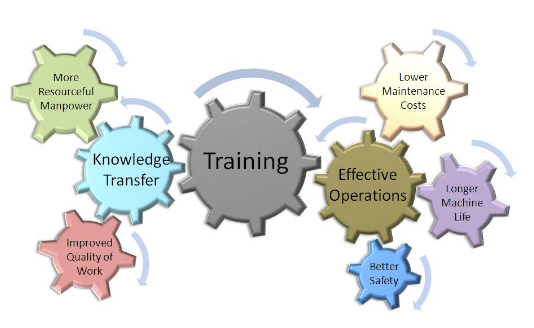
Conclusion
There are a variety of team building activities that you simply will use to enhance coworkers, celebrate success, and build communication skills. regardless of what the aim of the event, perpetually ensure you are taking the time to set up the main points, set goals and convey your expectations to the cluster.

